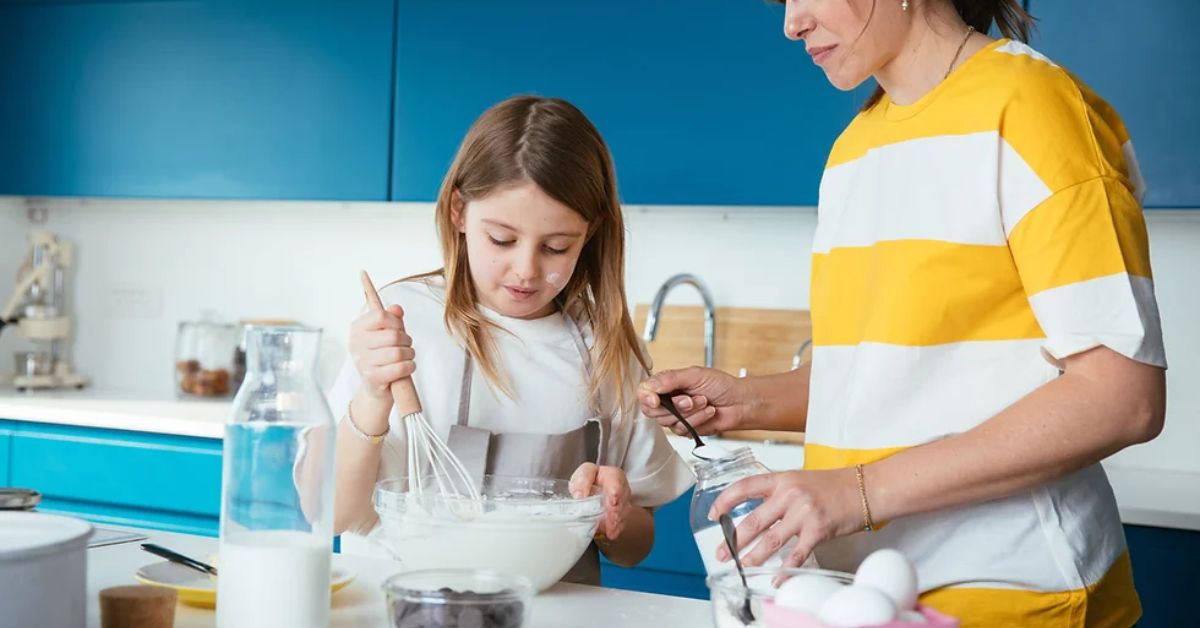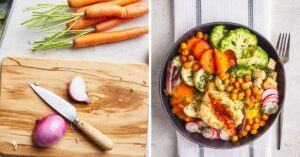In terms of baking, having the right ingredients is crucial for creating delicious treats. From flour to flavorings, each component plays a key role in the final product.
This article delves into the 10 basic ingredients in baking, their uses, and potential substitutes. Additionally, it covers essential techniques, adjustments for high altitudes, and common mistakes to steer clear of.
Whether one is a beginner baker or an experienced professional, exploring this content can help enhance baking skills.
In This Article
1. Flour
Flour is a key ingredient in baking, contributing to the structure and texture of a wide array of baked goods.
All-purpose flour, a blend of hard and soft wheat, is versatile and commonly utilized in various recipes. On the other hand, whole wheat flour includes the entire wheat kernel, providing a nuttier taste and denser consistency.
Gluten-free flour options like almond flour, coconut flour, or rice flour are available for those with gluten sensitivities.
The protein content in flour, especially gluten, is essential in baked goods. Higher protein levels lead to chewier textures, while lower protein levels result in lighter, fluffier baked goods.
2. Sugar
In baking, sugar serves as a crucial ingredient, contributing sweetness and moisture to a variety of recipes. Granulated sugar, commonly found in baking recipes, imparts a subtle sweetness and aids in creaming butter to produce light and fluffy textures in cakes and cookies. Brown sugar, containing molasses, offers a deep caramel flavor and chewy consistency to baked goods like brownies. Powdered sugar, also referred to as confectioner’s sugar, is well-suited for making icings and frostings due to its easy dissolvability and ability to provide a smooth finish to baked treats. The array of sugar types available allows bakers to experiment with different flavors and textures, elevating the overall taste and presentation of their culinary creations.
3. Eggs
Eggs are essential in baking as they provide structure, moisture, and richness to a variety of baked goods. Plus their structural role, eggs also serve as a binding agent, helping to bring together ingredients like flour and sugar. Beating eggs incorporates air into the mixture, aiding in leavening to help baked goods rise. Eggs contribute to the depth and complexity of flavors in desserts such as cakes, cookies, and custards.
For individuals following a vegan diet or dealing with allergies, there are several substitutes like applesauce, flaxseed meal, or mashed bananas that can be used in baking to achieve similar results while maintaining the desired texture and moisture in the final product.
4. Butter or Oil
Butter or oil are essential fats used in baking to add richness, flavor, and moisture to baked goods.
While butter contributes a rich and creamy flavor to baked treats, it also provides a tender crumb and a soft texture. On the other hand, oil is recognized for producing moist and light desserts, making it a favored option for cakes and muffins.
When evaluating healthier baking alternatives, options like applesauce, Greek yogurt, or mashed bananas can be substituted for traditional fats to lower the saturated fat content while preserving the desired moisture and texture in the final product.
5. Baking Powder
Baking powder is a leavening agent frequently utilized in baking to assist baked goods in rising and achieving a light, fluffy texture. When baking powder is mixed with liquid and subjected to heat, it releases carbon dioxide gas, which forms bubbles throughout the batter or dough. These bubbles expand during baking, leading to the mixture rising and producing the desired lightness.
It is important to use the correct quantity of baking powder because an excessive amount can lead to an unpleasant bitter taste in the end product. Striking the right balance is essential to guarantee that your baked goods are both fluffy and tasty.
6. Baking Soda
Baking soda, also known as sodium bicarbonate, functions as a leavening agent in baking by inducing a rise in baked goods when combined with acidic ingredients.
When baking soda is blended with substances like buttermilk or vinegar, a chemical reaction is triggered, generating carbon dioxide gas. This gas becomes trapped within the batter or dough and expands during baking, causing the mixture to increase in volume and resulting in a light and airy texture.
Proper activation of baking soda is essential for effective leavening. It is critical to confirm the presence of sufficient acid to react with the baking soda and avoid excessive mixing, as this could lead to the loss of the gas produced and potentially impact the final texture of the baked goods.
7. Salt
Salt plays an essential role in baking by enhancing flavors, controlling yeast activity, and strengthening gluten structure.
In baking, the choice of salt can significantly influence the final taste of baked goods. Common types of salt used in baking include table salt, kosher salt, and sea salt, each with distinct characteristics:
- Table salt is fine and easily dissolves.
- Kosher salt has larger flakes and a milder flavor.
- Sea salt provides a more complex taste due to its mineral content.
Achieving a harmonious flavor profile in recipes involves finding the right balance between salt and sweet ingredients. Insufficient salt can lead to blandness, while excessive salt can overpower the sweetness of baked treats. Experimenting with different types and quantities of salt can help in achieving the perfect balance for the desired taste.
8. Milk or Water
In baking, common liquids like milk or water are used to add moisture, flavor, and contribute to the texture of various baked treats.
In terms of richness and tenderness in baked goods, the choice between milk and water can make a significant difference. Milk, with its higher fat content, provides a luxurious richness to baked goods, resulting in a moist and tender crumb. On the other hand, water, being a neutral liquid, may not add the same level of richness but helps in achieving a lighter texture.
Also Read: Healthy Foods for Your Weight Loss Journey
For those following a dairy-free or vegan diet, alternative liquid options such as nut milks (almond, cashew, coconut), soy milk, oat milk, or even fruit juices can be excellent substitutes while imparting unique flavors to the baked creations.
9. Flavoring (Vanilla Extract, Spices, etc.)
Flavorings such as vanilla extract and spices play a crucial role in enhancing the taste and aroma of baked goods, adding depth and complexity to recipes.
Vanilla extract contributes a classic warmth to desserts with its rich and sweet undertones, while spices like cinnamon, nutmeg, and cardamom introduce earthy notes or a hint of heat.
By skillfully combining these flavors, bakers can develop harmonious blends that enhance the overall taste profile of their creations. For instance, a sprinkle of cinnamon can amplify the sweetness of a cake, and a touch of nutmeg can introduce subtle complexity.
Understanding the interactions between different flavorings is essential for crafting delicious treats that leave a lasting impact.
10. Leavening Agents (Yeast, Cream of Tartar, etc.)
Leavening agents such as yeast and cream of tartar are essential in baking to assist doughs and batters in rising, resulting in light and airy textures in baked goods.
Yeast, a microorganism, contributes to fermentation by converting sugars into carbon dioxide gas and alcohol, causing the dough or batter to expand. On the other hand, cream of tartar functions as an acid that activates baking soda in recipes, prompting the release of carbon dioxide for leavening.
Plus these, other common leavening agents include baking soda, baking powder, and whipped egg whites. Baking soda necessitates an acidic component to activate its leavening properties, while baking powder comprises both an acid and a base, making it adaptable for use in various recipes. Whipped egg whites are utilized in delicate soufflés and meringues to produce a light and fluffy texture.
What Are the Different Types of Flour and Their Uses in Baking?
Understanding the different types of flour and their specific uses in baking is crucial for achieving the desired texture and structure in baked goods. From all-purpose flour to specialty gluten-free options, each type brings unique characteristics to recipes.
All-purpose flour, with a moderate protein content, is versatile and suitable for a wide range of baked goods like cakes, cookies, and pastries. Bread flour, in contrast, has a higher protein percentage, making it perfect for yeast-leavened breads that need a strong gluten structure. Pastry flour, with a lower protein content, is great for tender pastries and pie crusts. Whole wheat flour, known for its nutty flavor and higher fiber content, adds depth to breads and muffins.
Choosing the appropriate flour for your recipe is vital as it significantly influences the final taste, texture, and appearance of your baked goods.
How Can You Substitute Ingredients in Baking?
Knowing how to effectively substitute ingredients in baking can be helpful in various situations, such as when you run out of a specific item or need to accommodate dietary restrictions. Whether it’s about replacing eggs, sugar, or flour, understanding suitable alternatives is crucial to maintain the integrity of your recipes.
For example, if eggs are not available, you can consider using a mashed banana or applesauce to provide moisture and binding properties. While this substitution can work well in muffins and quick breads, it’s important to note that it may introduce a slight flavor change.
When replacing sugar with honey or maple syrup, adjusting the liquid content in the recipe is necessary to avoid excess moisture. If you are looking for a gluten-free option, almond flour or coconut flour can be used instead of traditional wheat flour. However, be prepared for a denser texture and make sure to adjust the leavening agents to compensate for the lack of gluten.
What Are the Key Techniques in Baking?
Mastering essential baking techniques is crucial for achieving delicious and consistent results in baked goods. Creaming butter and sugar, folding in ingredients, and other methods are all key components in creating successful baked goods.
Creaming involves beating softened butter and sugar to incorporate air, resulting in a light and fluffy texture in cakes and cookies. Kneading dough helps develop gluten, giving bread its structure and chewiness. Folding delicately combines ingredients like whipped egg whites into batters without deflating them, ensuring a soft and airy crumb. Whipping cream or egg whites introduces air, creating aeration that leads to a light and fluffy final product. Each of these techniques plays a role in determining the texture, structure, and flavor of the finished baked goods.
How Can You Adjust Baking Recipes for High Altitudes?
Baking at high altitudes presents unique challenges due to lower air pressure affecting the baking process. Making adjustments to recipes by altering ingredients or baking times can help compensate for these environmental factors and ensure successful bakes.
One key tip is to reduce the amount of leavening agents, such as baking powder or yeast, as they can cause over-expansion in baked goods. Increasing the liquid content in your recipes can help combat dryness, as liquids evaporate more quickly at higher altitudes. Adjusting oven temperatures is also crucial; you may need to increase the temperature slightly to ensure proper baking. By making these adjustments, you can tackle common issues like collapsed cakes and dry textures in your high-altitude baking endeavors.
What Are the Common Mistakes to Avoid in Baking?
In the realm of baking, certain errors can lead to unsuccessful or unsatisfactory outcomes in your baked goods. Avoiding common mistakes like overmixing, inaccurate measurements, and oven temperature discrepancies can notably enhance the quality of your baked treats.
Overmixing can toughen the texture of cakes and muffins, while inaccurate measurements can disrupt the ingredient balance, resulting in a dense or dry final product. Oven temperature errors can cause uneven baking, leading to cakes sinking in the middle or cookies burning. To avoid these issues, it is essential to accurately follow recipes, utilize a kitchen scale for precise measurements, and consider using an oven thermometer to ensure temperature precision.
Taking these precautions can assist in consistently achieving delicious baked treats every time.
Also Read: 10 Best Fantastic Health Benefits of Eating Vegan







